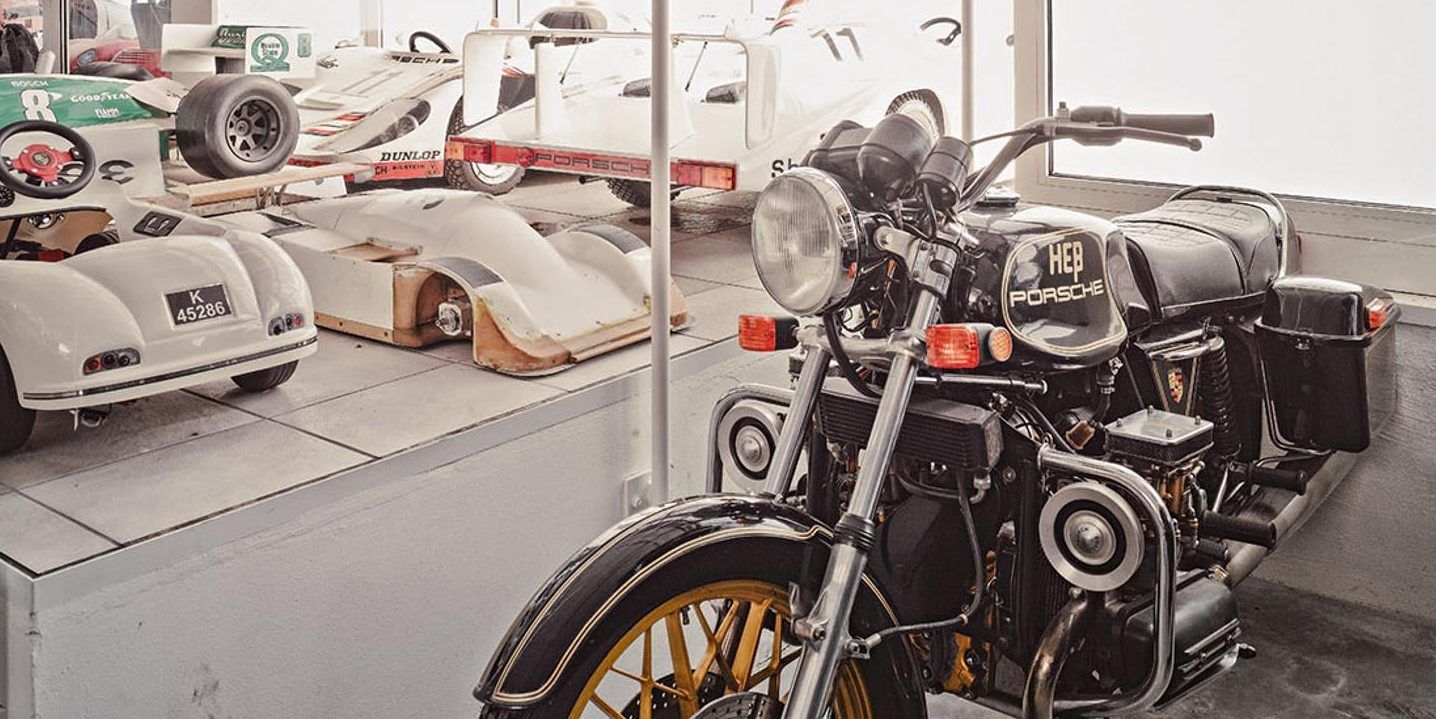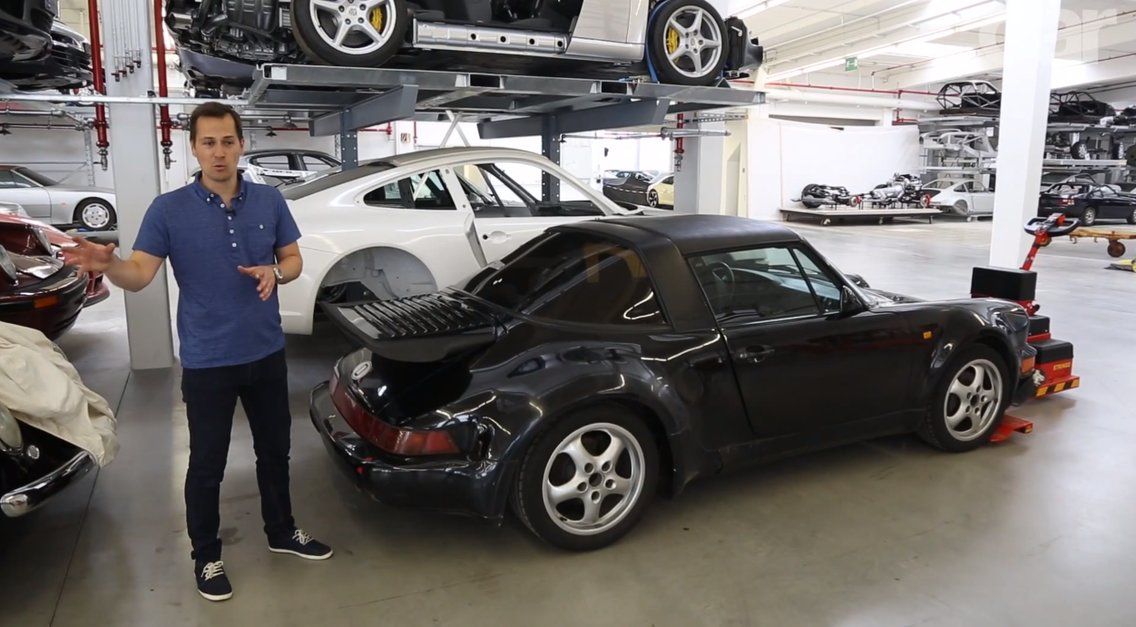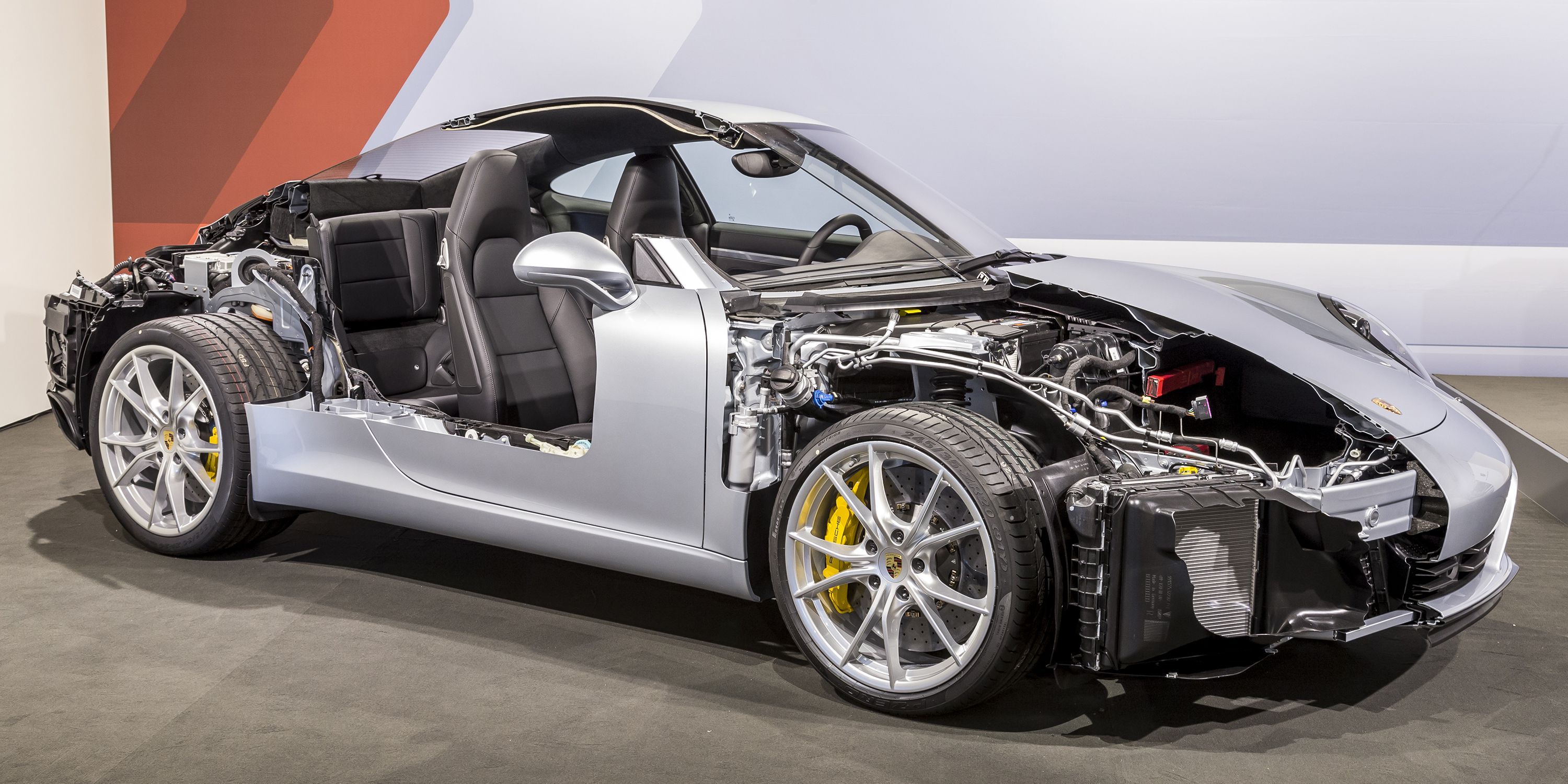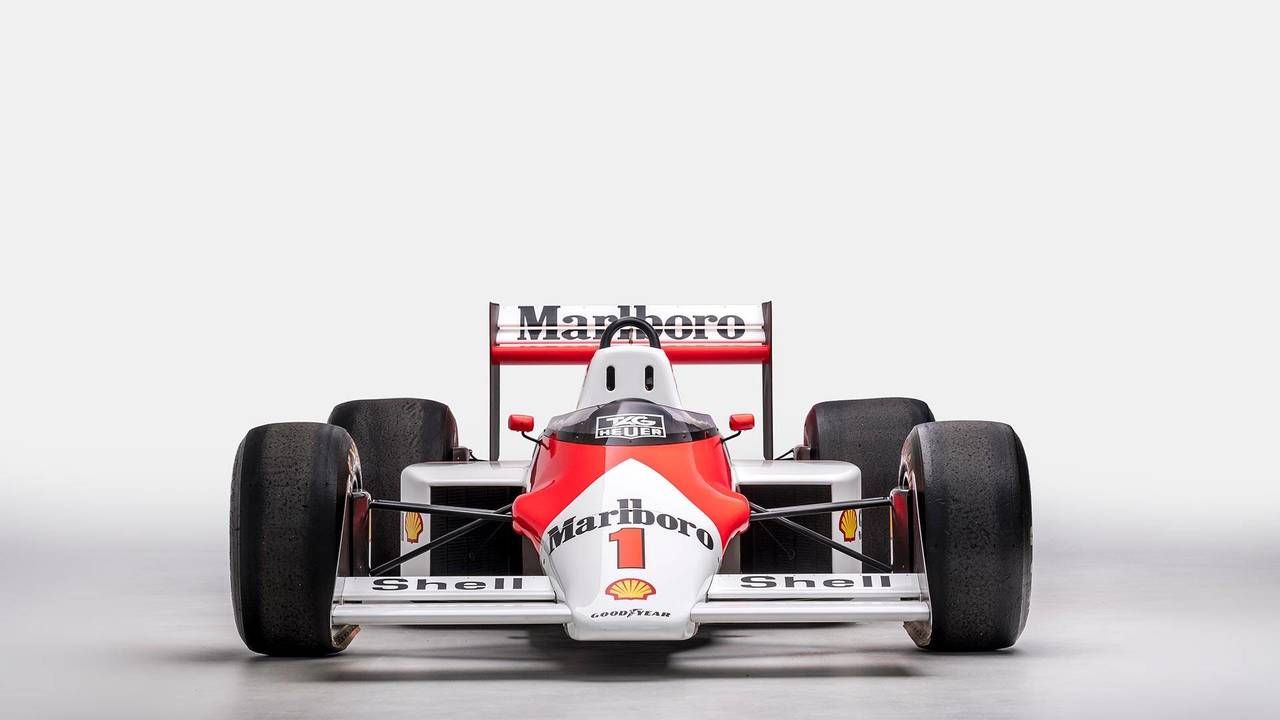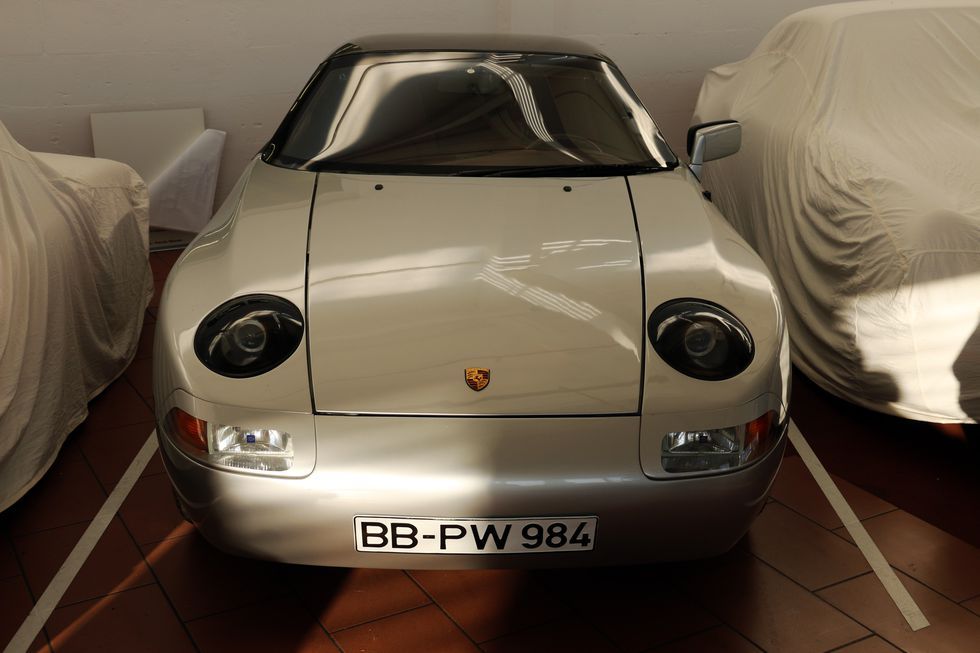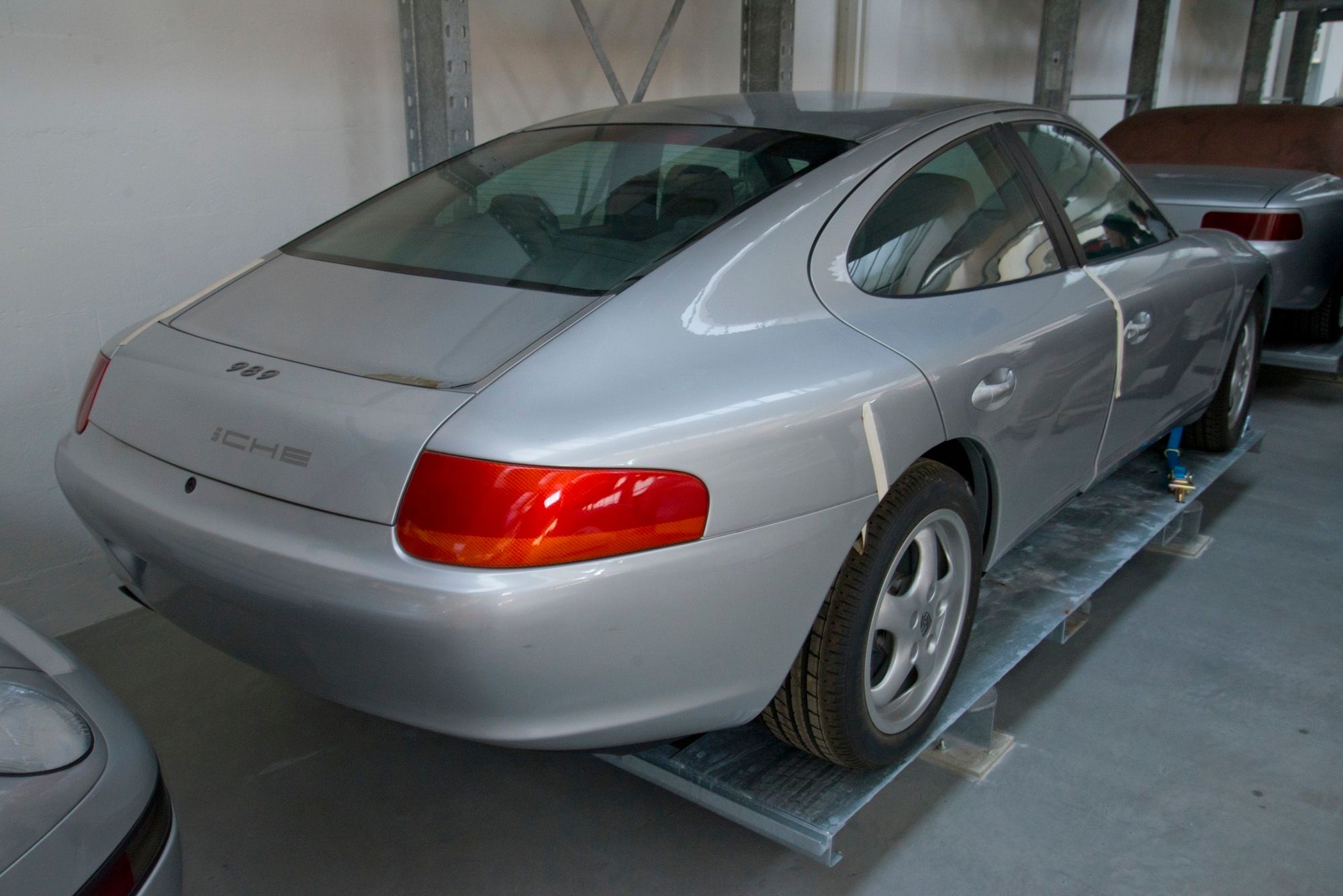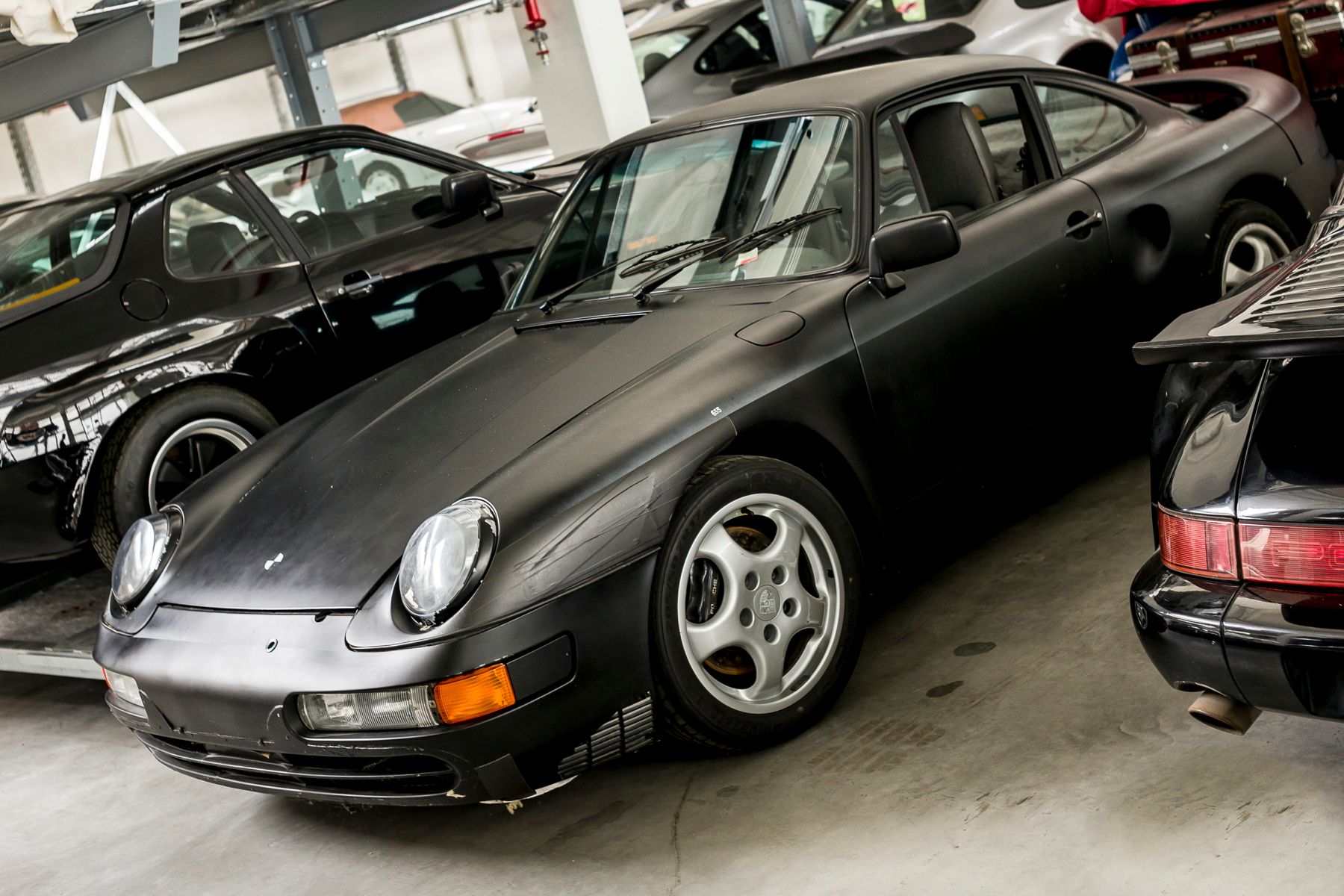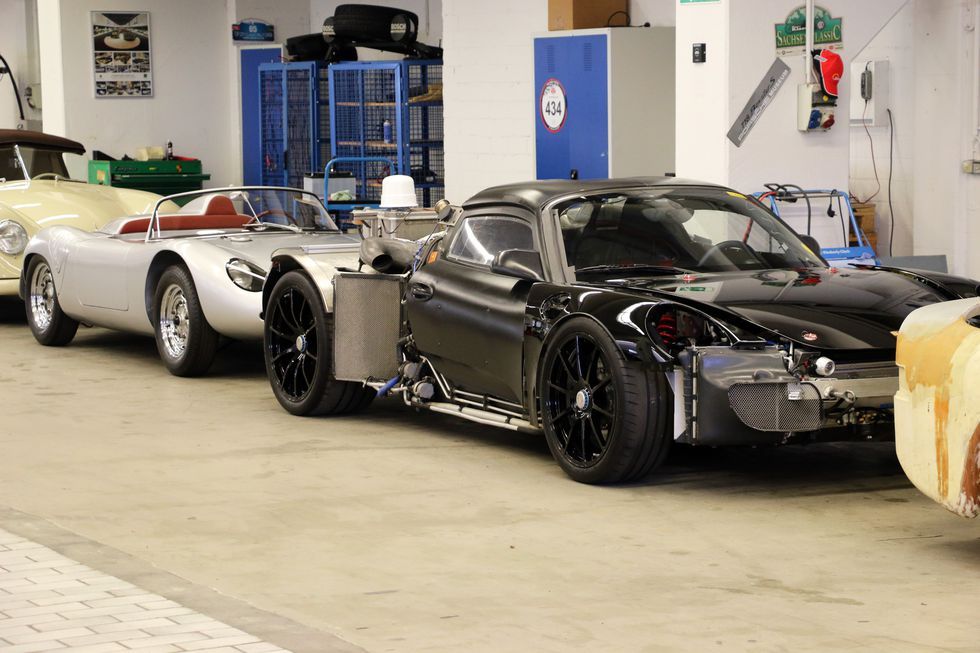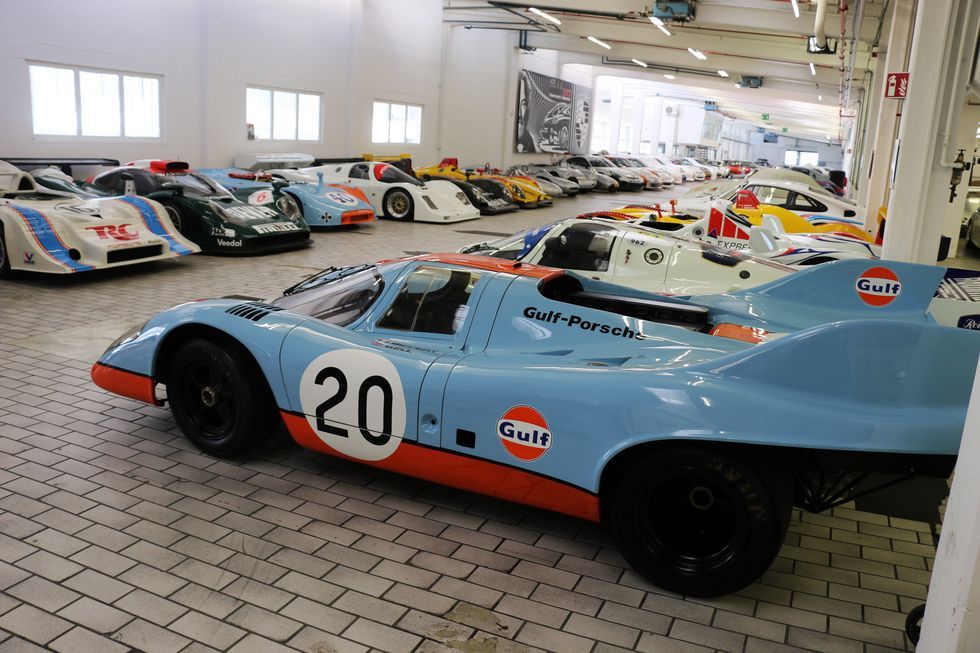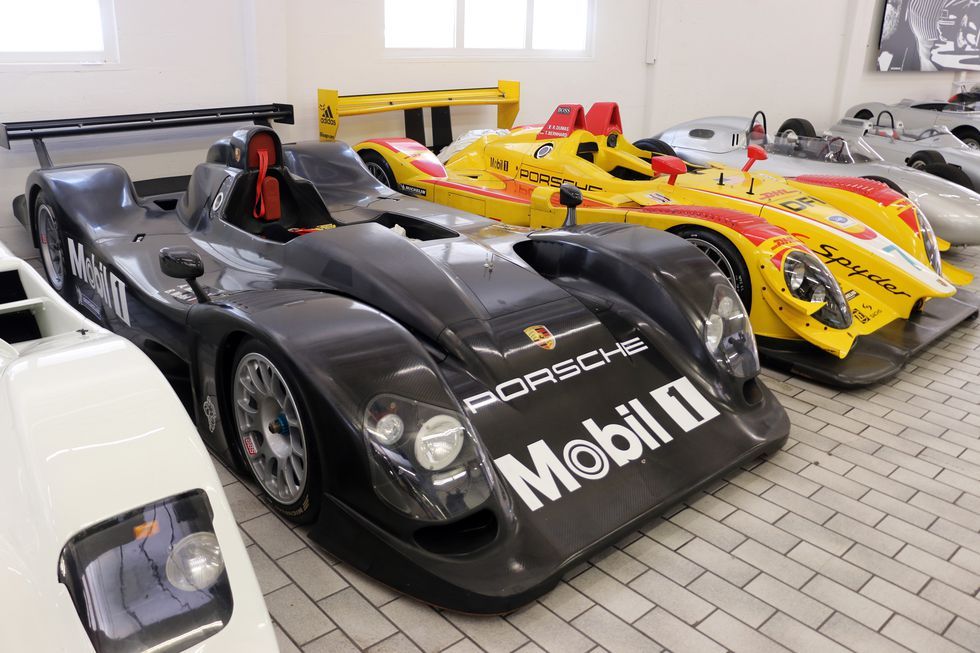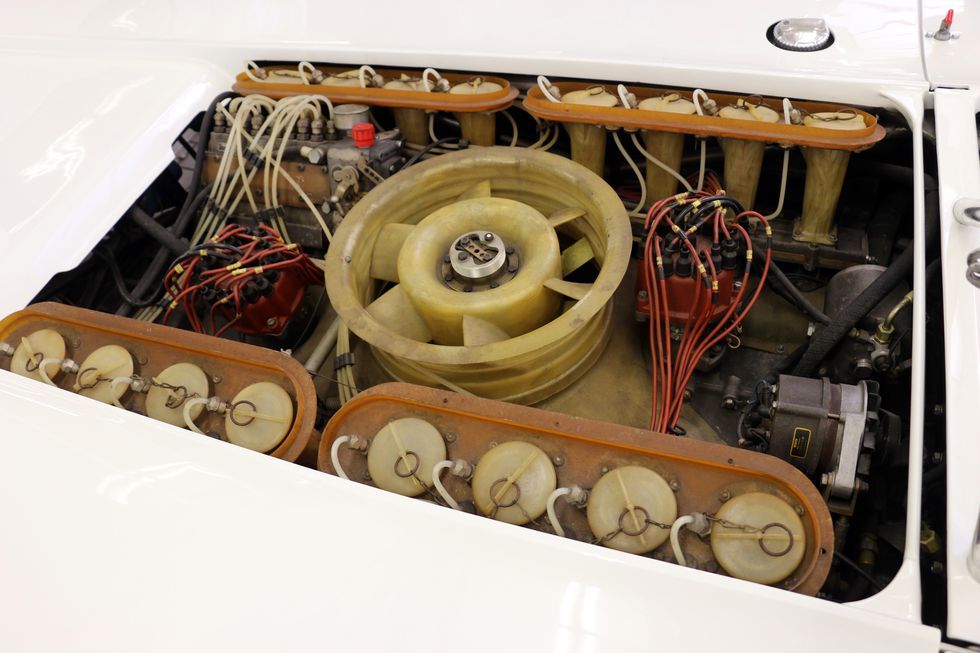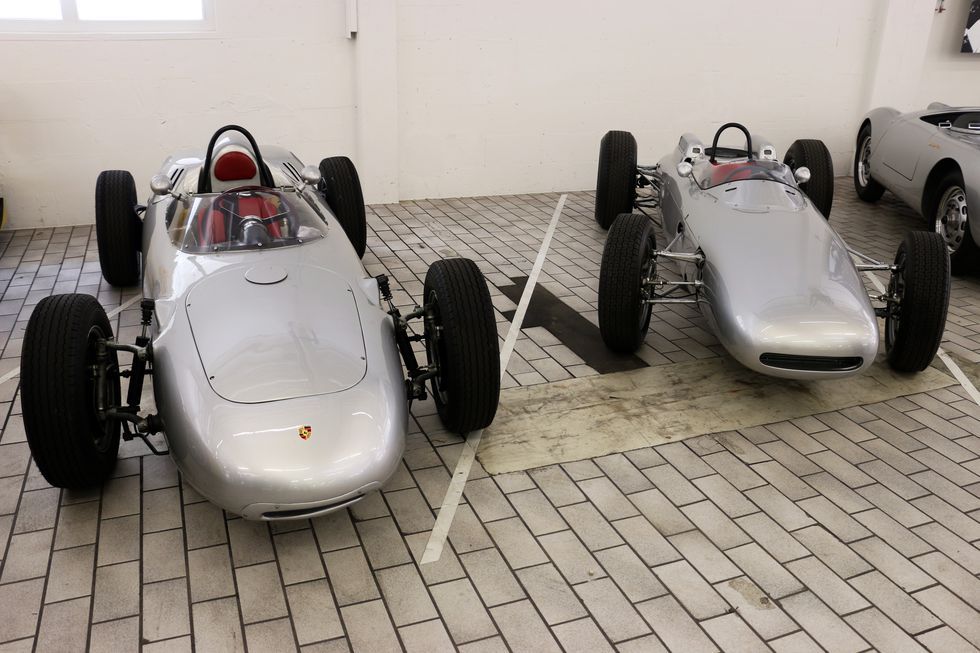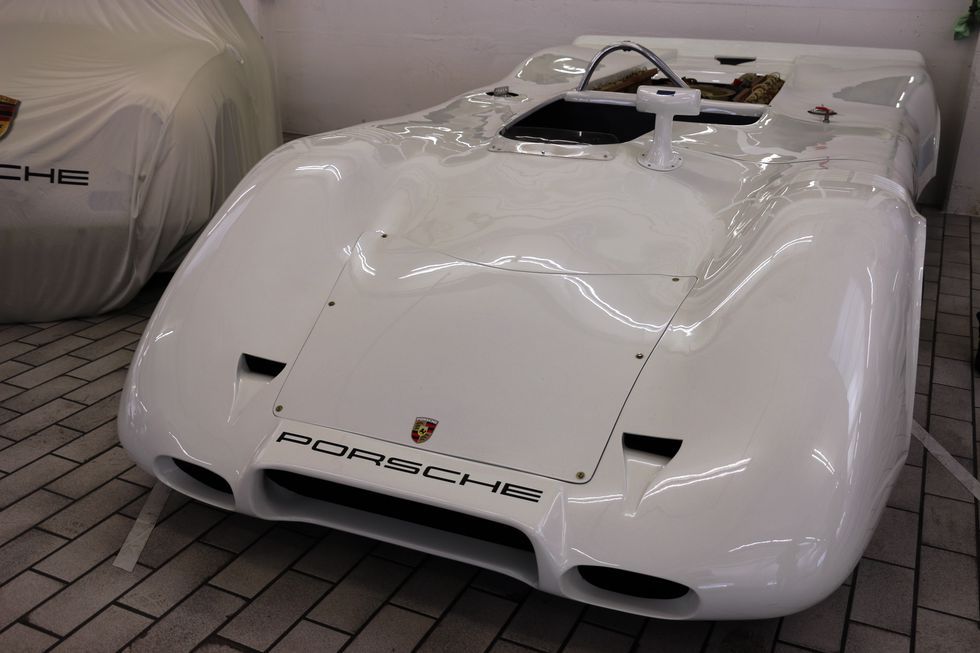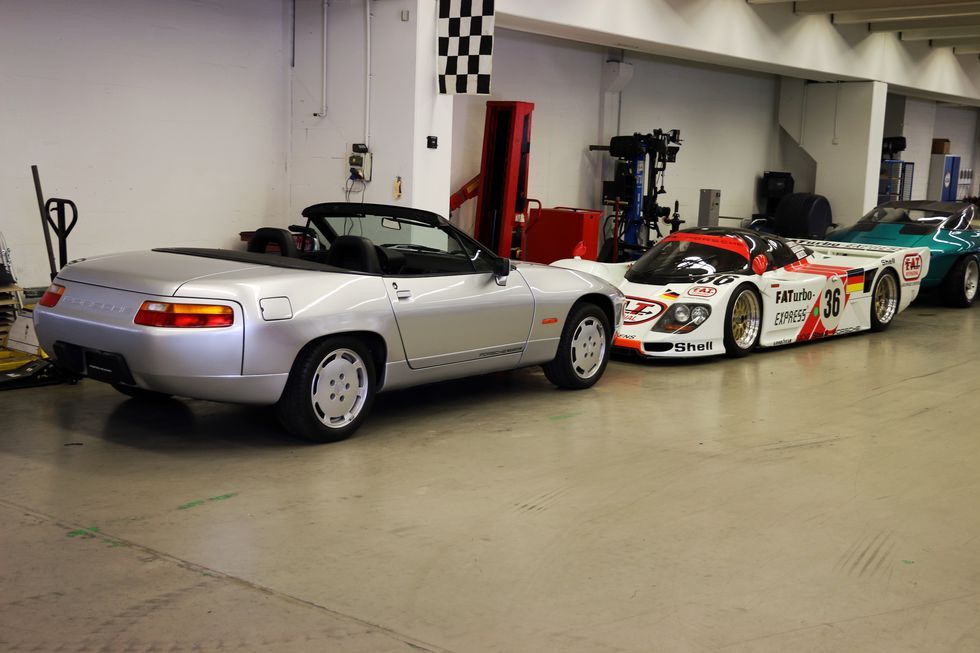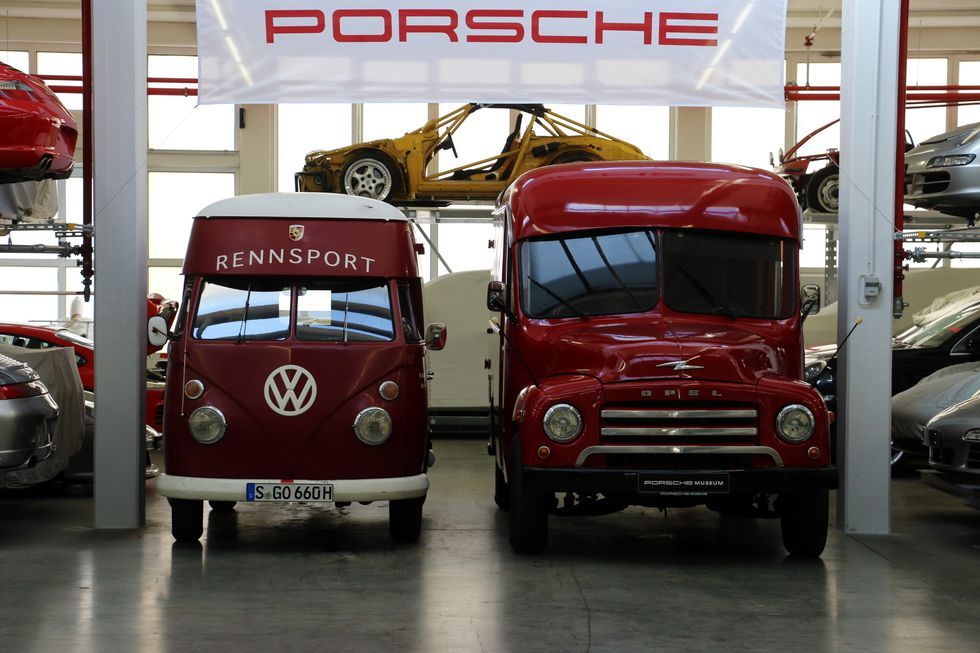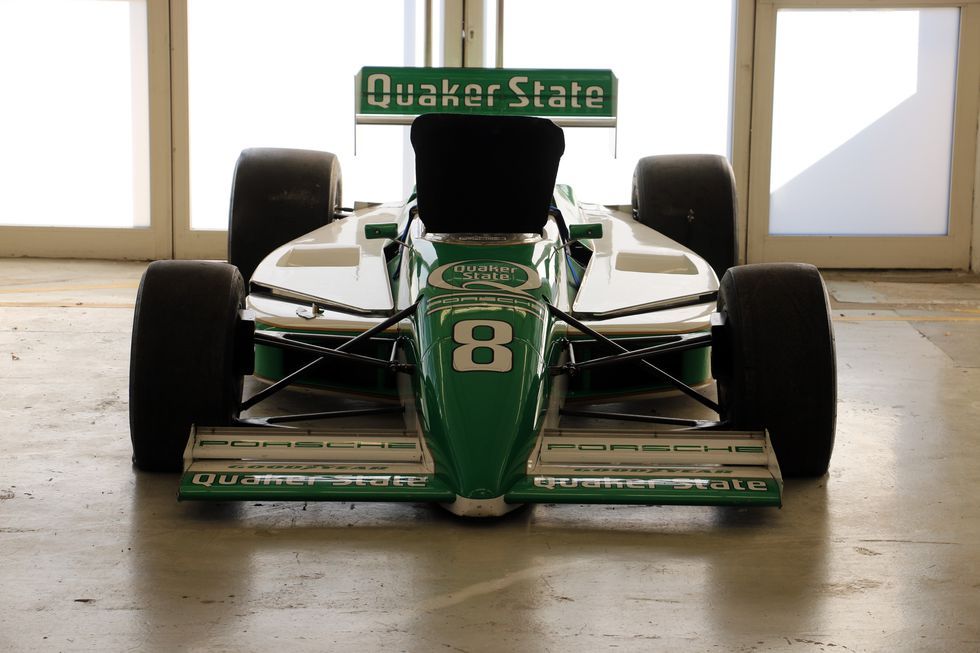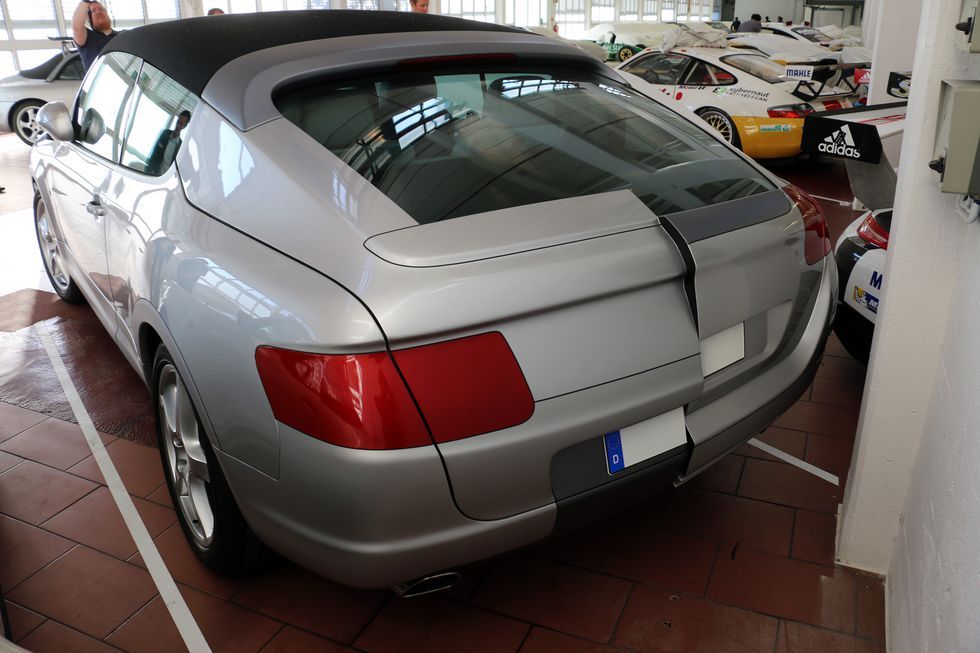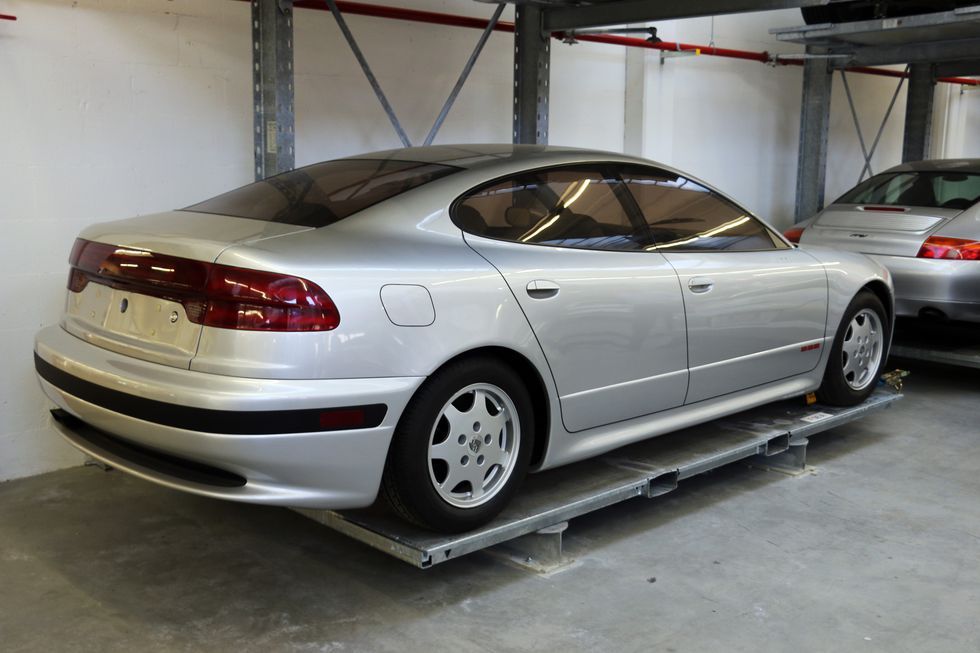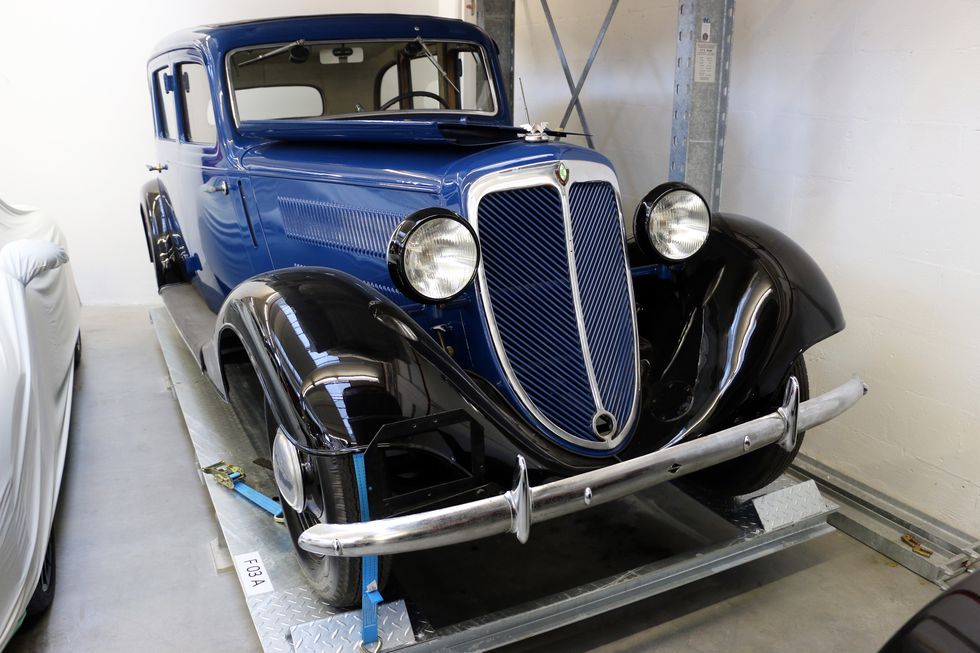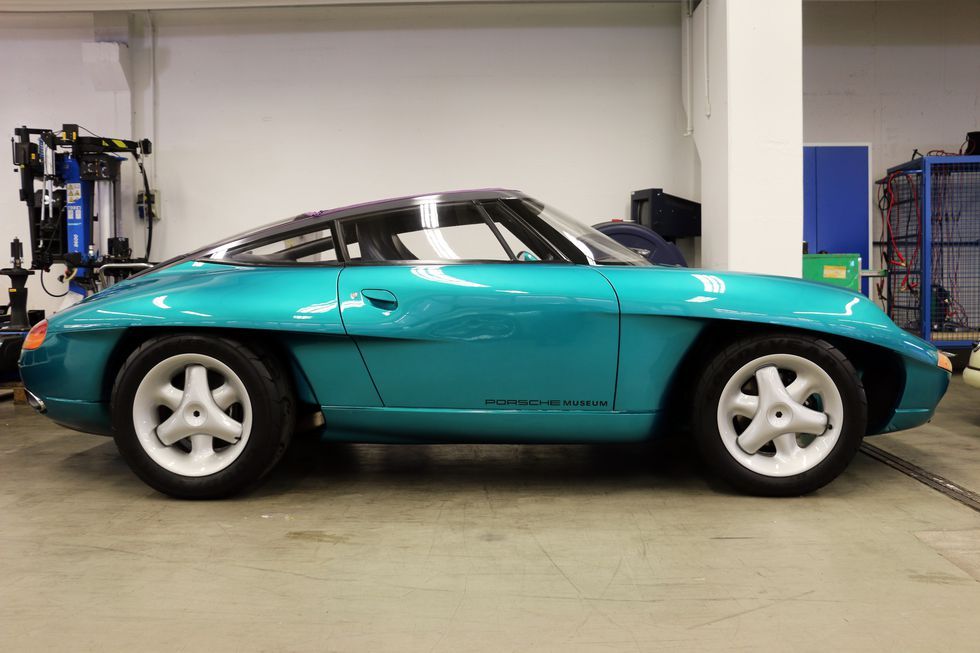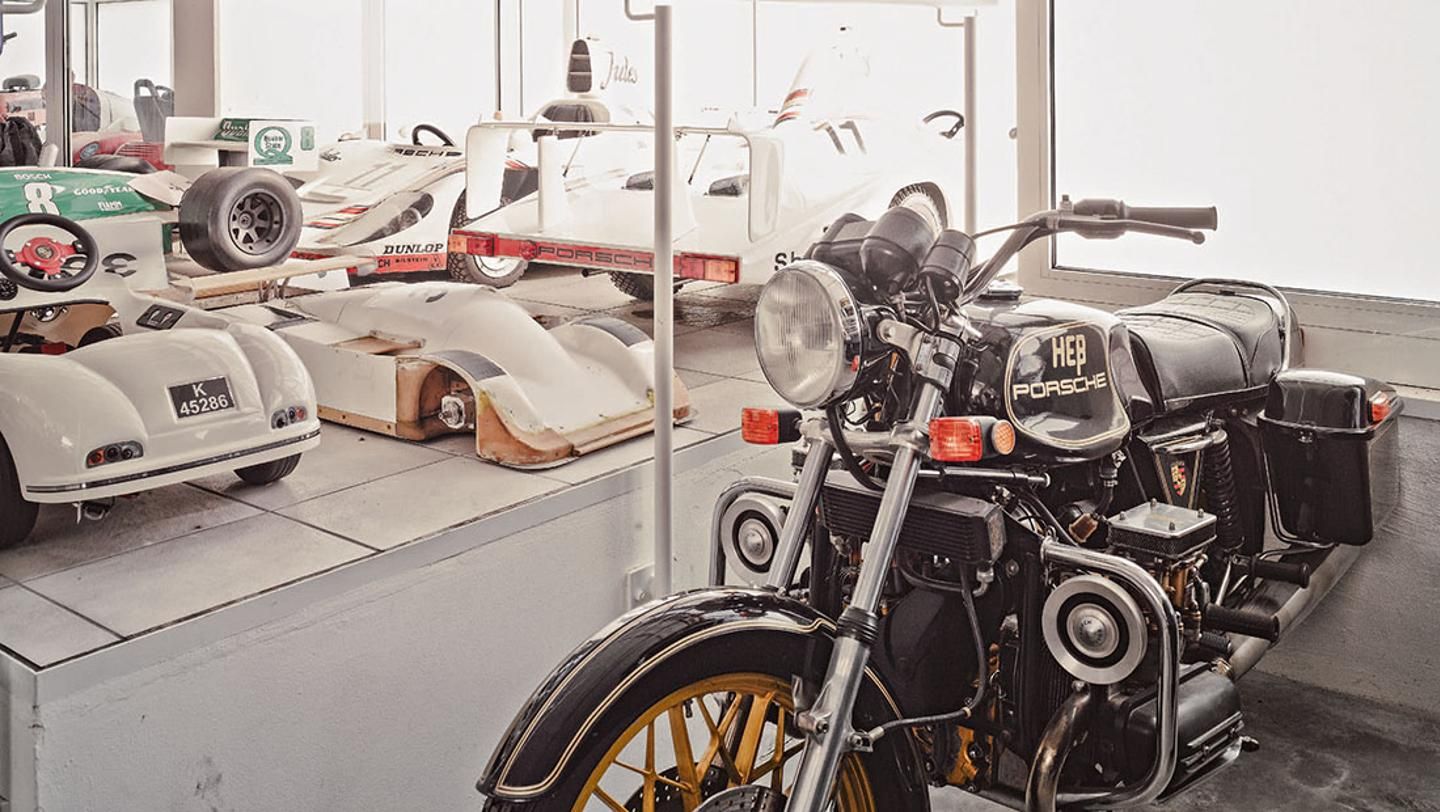Porsche has established itself as one of the best sports car manufacturers in the world. The flagship 911 is the yardstick by which all other performance cars measure themselves. As a friend once pointed out, a car will be lauded for accelerating faster than a Porsche or stopping faster than a Porsche, but you'll rarely see a car that does everything better than a Porsche. The reliability of the vehicles produced by the company is legendary, making Porsche the winningest manufacturer at the grueling Le Mans 24 hour endurance race. Their presence at the top of the podium has led Radio Le Mans commentator Paul Truswell to observe that it didn't matter who led the race at the 20th hour because, by the 22nd, some 'boring white Porsche' that no one has noticed and has been lapping without incident will emerge in the lead.
Porsche has done all of this seemingly by doing the exact opposite of what conventional wisdom would suggest. On the 911, the engine hangs off the back end of the car behind the axle; its teardrop shape is better for lift than downforce. Until 1998, the engines were cooled by air instead of liquid. Despite or because of all of that, Porsche has become the rabbit all other manufacturers have to chase.
When a company like that has a warehouse of its cars and projects, it's bound to be filled with some interesting things. Here are 20 things you should know about the private warehouse at the Porsche factory.
20 964 Boxster
Just outside of every testing facility and armed with lawn chairs, thermoses, and telephoto lenses sit photographers waiting for glimpses of the newest models being tested by manufacturers. The manufacturers don't want their cars in the public eye before they're ready. There's a variety of methods employed ranging from disguised paint to cover panels. Another method is to take the bodywork from a current or previous model and put them on the new chassis, like this test Boxster with the bodywork of a 964. Porsche uses internal '9' numbers for various iterations of their 911 and other models.
19 Cutaways
Cutaways are an amazing tool to demonstrate the technology that lives beneath the carefully crafted skin of a new car. A manufacturer will make a cutaway car with key parts of the car removed to show off what it is exactly you'll be paying all of that money for. Once the cutaway cars have done their promotional jobs touring auto shows and press events, they find their way into the Porsche warehouse to be stored. The warehouse stores cutaways going back decades.
18 McLaren Porsche F1
With the insane horsepower and speed of Formula One racing, it's easy to forget how small the engines are, ultimately. During the '80s, the 1.5-liter engines were allowed to be turbocharged, creating one of the most legendary periods of the series' history. At the center of that was the Porsche-powered McLaren MP4/2 piloted by Alain Prost and former James Hunt rival and subject of the movie Rush Niki Lauda. With three drivers' championships and two manufacturer championships under its belt, this vehicle was a standard bearer for both McLaren and Porsche. In the warehouse, this legend sits prepared for revival and historic events.
17 Porsche 984
During the '90s Porsche was struggling. They had models outside of the 911 that had petered out, and they struggled to keep up with just the 911 to hold the company afloat. They started to experiment with an entry-level car, one that they could sell in larger numbers like they had done with the 914 but without sharing the badge with Volkswagen. One of their earlier designs was the stillborn 984. Before the 986 that we eventually got, the 984 leaned more on the designs of the defunct 944 and 968. Ultimately, they decided to look forward instead of back, and we got the much more attractive 986.
16 996 Four Door
Most car manufacturers use prototypes as vehicles to demonstrate the company's technologies and development and, potentially, the style direction they'll be taking cars in the future. The cars themselves hardly ever see production, though. Porsche, however, rarely shows a car they don't make. That doesn't mean they don't make prototypes that don't see production; they just tuck them away in the warehouse, like they did with this 996 four-door. The 996 was already unloved for its water-cooled engine and the fact that it shared parts with the downmarket Boxster, so it was probably best that this wasn't how they also introduced the first four-door Porsche.
15 Porsche 965
In the 1980s, Porsche was looking for something to fit between the flagship 911 and the halo supercar 959 to replace the aging 930 turbo.
The detuned engine from the 959 was too expensive, so they went looking for an unconventional solution: an Audi-sourced V8.
The idea managed to make it to the test mule stage with a handful built and tested. Ultimately, the costs still remained too high, and the performance wasn't what they were looking for. And with new management, the project was shelved, and the 964 turbo happened instead. The last one sits under wraps in the Porsche warehouse.
14 The 918 Mule
The Porsche 918 was a huge departure from just about everything. It was one of the first hybrid supercars, combining electrical and gasoline power not only to conserve fuel (Porsche claims a possible 70 mpg) but also to scream down raceways. This kind of innovation needed a lot of testing and modeling.
The drivetrain was tested in the chassis of the previous halo car, the Carrera GT, which had to be cut up significantly to take in the new hybrid powerplant.
Several of these mules sit in the warehouse after having made the breathtaking 918 Spyder a reality.
13 Historic Restorations
Porsche is a company with a rich racing history. That reputation is a big part of what sells Porsches today. Porsche supports that history by restoring and maintaining the fleet of former racers for historic racing events and speed festivals around the world. These cars don't sit as static displays; Porsche maintains them in race-ready condition so they can be run at events like the Goodwood Festival of Speed or the Monterey Historic Automobile Races, allowing fans to hear the legendary 917 and 935 race cars at full song as they were always meant to be.
12 Unused Le Mans Prototype
Le Mans is an important part of Porsche's mystique. There are even a set of corners on the legendary track named after the brand. For Porsche, winning the classic endurance race is imperative. After the Group C class that Porsche had dominated with their 962 ended, Porsche stepped away from the prototype category for a number of years. In the late '90s and the early 2000s, they began working on a return to the top category. Ultimately, the car never made it to the track, but it did donate its engine to the then-upcoming Carrera GT supercar.
11 Flat-16 Engine Prototypes
The Canadian American Challenge Cup known as' CanAm' was more or less an open series for constructors. This resulted in some of the craziest, most powerful cars to run across a road track. Porsche looked to conquer the series with a variation of their dominant 917. To compete with the Chevy big-block V8s that were powering the dominating McLarens, their first thought was to double the cylinders with their 880 hp flat-16 engine. Unfortunately, it proved too big and heavy, and attaching turbochargers to the existing 12-cylinder gave them numbers north of 1,200 hp for less weight. The 917/30 became a racing legend. The flat-16s sit restored in the warehouse.
10 Porsche’s F1 and F2 Open Wheelers
Porsche has dominated sports car racing since the first Porsche lined up to race. Outside of the engine powering the turbo-era McLaren, Porsche has given Formula One a pass for the most part. Doctor Porsche did give the premier open-wheel series a go in the early sixties with Dan Gurney earning the car its only win at the top.
The car, the Type 753 with an air-cooled flat-8 engine, was a grown-up version of the 718 F2 car that was more successful in the lower category.
Up against Sharknose Ferraris and monocoque Lotus cars, Porsche struggled to make a dent and quickly returned to sports car racing. The 753 and the 718, the latter of which donated power to their mid-engine sports car, sit ready to be shown in the warehouse.
9 917/16
The massive flat-16 engine developed for the Can-Am series needed a special chassis. Still based on the prototype-dominant 917, the 917/16 was longer and wider to accommodate the 706-pound engine. They had built it to be able to scale up and down to from 6.0 to 7.2 liters.
Mark Donahue, who would later pilot the 917/30 to a dominating championship run in 1972, liked the car but perhaps gave Porsche the seed idea that led to this car's demise and the 917/30's birth.
Supercars.net says Donahue remarked that the car was a beast and that with turbocharging, it could deliver 2,000 hp. It was a good enough idea for the base 12-cylinder to become so dominant, it practically killed the series.
8 928 Convertible
Porsche doesn't actually like convertibles. Sure, they offer them for the 911 model, and the Boxster is a drop top, but ultimately, the people that have the family name aren't big fans. Roofs add chassis stiffness and aerodynamics and are lighter than a mechanical roof system. When the new television vehicle for rising-star Tom Selleck was looking for a car, they asked if they could have a 928 convertible. Porsche tried it, but they didn't like it, and they passed. The Ferrari 308 took the job, and Magnum P.I. drove that car to fame. Porsche then stowed the topless 928 in their warehouse.
7 Rennsport Transport Bus
Volkswagen and Porsche never strayed too far from each other. Both of Doctor Ferry's brands share a great deal of heritage. In the early days of Porsche's racing, Volkswagens would be employed to bring the fast Porsches to the races and support the race cars once they got there. While today, the transporters that bring race cars to the track are a pretty standard affair, in the fifties and sixties, racing transports were another way for a team to express their engineering or family prowess. The warehouse is home to a VW Bus hightop and an Opel transport and support team for Porsche's Rennsport division.
6 Porsche 2708
Porsche had already made a run at American open-wheel cars in 1980 only to have the rules changed by sanctioning body USAC, making them swear off Indycars for good. After a successful run in F1 with McLaren who had moved on to Honda and Ayrton Senna, Porsche looked again to Indy cars, which were now under the tutelage of CART. Their first attempt was a full Porsche chassis and engine, but the chassis was woefully undeveloped. They switched to a March that had a moderately successful 1989 season with the team's only win, but that they did poorly at the Indianapolis 500 was the only thing that mattered. Porsche pulled out of IndyCars for good, and project 2708 sits in the Porsche warehouse.
5 Cayenne Convertible Design Study
While Porsche traditionally doesn't like convertibles, in the 21st century, Porsche has come to terms with a lot of things that they wouldn't have previously. There are now Porsche sedans and SUVs, and both of those are sales leaders for the company. Since they were breaking traditions already, it appears that they were open to breaking a few more. Hidden in the bowls of their private warehouse, they have this design study on a convertible Cayenne, which included a couple choices of roof lines. Fortunately, the powers that be felt it wasn't for Porsche, and in the warehouse it stays.
4 Porsche 932
Porsche has been flirting with the idea of a four-door car for quite some time. Even before the 932 pictured here, there was the 989, which never got off the drawing board.
This 932 concept made in 1990 looked like any regular 1990s sedan except for a rather odd set of inset rounded headlights meant to hint at the 911's bug-eye look.
It's perhaps the pedestrian look with the misplaced headlights that ultimately killed the car known as the 'Panamera II,' showing how long the concept name has been around. Now, the rejected prototype is under lock and key in the warehouse.
3 Wanderer
Before Doctor Ferry Porsche penned the iconic Volkswagen and eventually the first car to bear his name, he was doing designs for Germany's other big manufacturers of the time. He had already designed the first hybrid-powered car for Mercedes Benz. For the Wanderer company, a subsidiary of Auto Union that would eventually become Audi, Porsche lent his engine design skills for the overhead-cam 1,950 cc engine that powered the W-series pre-war cars. An example of the Wanderer sits in the warehouse.
2 Porsche Panamericana Concept
There was a practice at Porsche to present Doctor Ferry with unique one-off design-study gift prototype cars. In the '70s, he was given the only eight-cylinder (aftermarket swaps notwithstanding) 914. For his 80th birthday in 1989, he was given this design study by Harm Lagaagy, who would later go on to design the Boxster. This was built on a 964 C4 chassis with plastic and carbon fiber with wheel wells that were designed to allow for various different sizes of tires. While the ungainly elements never made it into a production car, some of the design cues made their way to the Boxster and 993.
1 Hess-Porsche Single Track 356
Up until the 21st century, Porsche was relatively single-minded in their pursuit. They made one thing, and they did it well: they made sports cars. That doesn't mean that everyone was as single-minded, however. A designer by the name of 'Hess' took the forks and suspension and a few other bits from a BMW motorcycle and designed a special frame along with twin oil coolers to house a Porsche 356 engine in a motorcycle. Only one came into being, and that sits in the warehouse, but there are people who have either fabricated their own or built their own, resulting in kit-converted BMW motorcycles with 356 engines.
Sources: businessinsider.com roadandtrack.com jalopnik.com porsche.com

